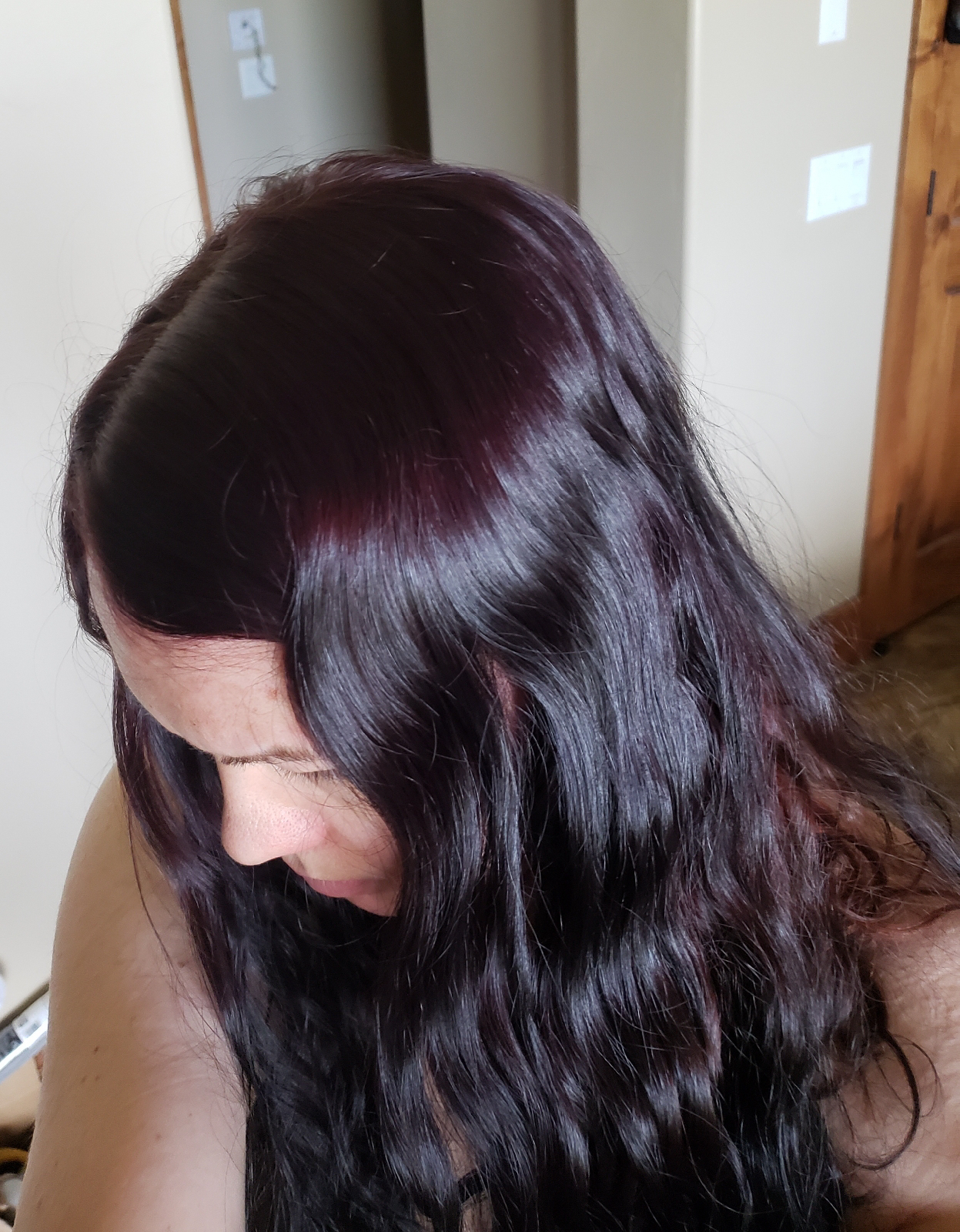New & Improved Method for Natural Purple Hair (Natural Eggplant Hair Color with Logwood)

I've worked out a method that might be more protective against the drying/damaging effect of the alkaline mix. Logwood doesn't dye hair without the alkalinity of baking soda, but using sidr as the filler powder might help protect it, being an emollient herb. It's low in tannins and, therefore, doesn't compete with the logwood dye. Another change is that I'm doing an alum pre-soak instead of after-soak, which may do a better job of making logwood dye adhere. Grey or platinum blond hair will turn peach-pink. More photos before we get to the recipe. Note that this one shows a lighter colored spot in the middle which only has henna on it from before (didn't get any logwood). Also, I'm still growing out old indigo black hair at the bottom. INGREDIENTS: Alum pre-soak: - 1 tsp alum powder (potassium aluminum sulfate) (Or 2/3 tsp aluminum sulfate). There are many options on Amazon. - 1/2 tsp baking soda (here to ph balance the pre...



